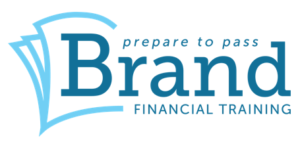The Brand Financial Training team consider changes to the Seed Enterprise Investment Scheme and how thy affect investment into start-up businesses.
The Seed Enterprise Investment Scheme (SEIS) is a UK government-backed initiative designed to encourage private investment into early start-up companies which may otherwise have difficulty obtaining funding from more traditional sources.
Since April 2023, key changes have been made to the scheme which we explain in this article.
Firstly, from the perspective of the companies, they are now able to raise up to £250,000 in investment, an increase from the former £150,000.
In order to qualify, a company applies for SEIS Advance Assurance, which is HMRC validation that the company will qualify for funding. The company will need to meet certain criteria. It must, for example:
- be less than 3 years old (increased from the previous 2 years)
- have less than £350,000 in gross assets (increased from the previous £200,000)
- employ less than 25 people
- be carrying out a qualifying trade
In return for taking on the risk of investing in small high risk companies, investors can receive various tax reliefs as follows:
- 50% Income Tax relief on investments up to £200,000 (increased from the previous £100,000)
- Capital Gains Tax (CGT) relief after 3 years on any profits they receive upon sale of the shares
- Inheritance Tax (IHT) relief after 2 years
Usually, the rule is that Income Tax relief is given in the tax year the shares are issued. However, with a Seed EIS it is possible to treat some or all the shares as issued in the previous tax year and claim relief in that tax year, subject to the maximum relief limit for the tax year.
Also, when a gain is made on the disposal of an asset, CGT is usually paid for the tax year when the disposal took place. However, with a Seed EIS, investors can take advantage of reinvestment relief by reinvesting that gain in shares in a company where Income Tax relief is available. Investors can treat 50% of the gain as exempt from CGT, up to a maximum of £100,000, with the other 50% chargeable in the normal way.
Do note though that reinvestment relief will not be available where Income Tax relief is not given.
If a loss is made on the disposal of SEIS shares, this loss can be set against any chargeable gains. However the cost of the shares must be reduced by the amount of any Income Tax relief that was given and not later withdrawn.
All in all, the key changes applying to Seed EISs will help start-up companies raise more funds under the scheme, which can only help stimulate economic growth.
The Enterprise Investment Scheme (the EIS) was not so lucky and no changes were made for this tax year but as a reminder these also offer significant tax reliefs in respect of qualifying investments, which includes:
- 30% Income Tax relief on investments up to £1m (up to £2m where £1m is in knowledge intensive businesses)
- CGT relief after 3 years ownership
- IHT relief after 2 years ownership
- Income Tax loss relief
In summary, investment in EISs and SEISs can be done by investing directly in a single qualifying company or by investing through a fund which would offer more diversification. EISs and SEISs might be suited to experienced investors wanting to take advantage of the CGT benefits, who want to reduce their Income Tax bill and who want to reduce their IHT liability – with both EISs and SEISs they can do all this – but remember the risk to capital is still something that must be carefully considered.
About Brand Financial Training
Brand Financial Training provides a variety of immediately accessible free and paid learning resources to help candidates pass their CII exams. Their resource range ensures there is something that suits every style of learning including mock papers, calculation workbooks, videos, audio masterclasses, study notes and more. Visit Brand Financial Training
[Main image: adeolu-eletu-rFUFqjEKzfY-unsplash-scaled]




























